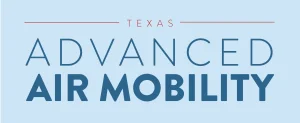- Directory
- Advanced Air Mobility White Papers
- Advanced Air Mobility (AAM)
- Texas Report and Recommendations of the Advanced Air Mobility Advisory Committee
Texas Report and Recommendations of the Advanced Air Mobility Advisory Committee
White Paper Details
Title
Texas Report and Recommendations of the Advanced Air Mobility Advisory Committee
Year Published
2024
Author
Texas Advanced Air Mobility Advisory Committee,
Number of pages:
62
PDF Download
The Texas Advanced Air Mobility (AAM) Advisory Committee, established under Senate Bill 2144 (2023), authored this report to guide legislative action for integrating AAM technologies—including drones and electric vertical take-off and landing (eVTOL) aircraft—into Texas' transportation ecosystem. The report outlines economic, societal, and environmental benefits, identifies challenges, and provides a
AAM encompasses a transformative aviation system using advanced electric and autonomous aircraft for cargo, passenger transport, and emergency services. It includes:
- Urban Air Mobility (UAM): Intra-city travel via air taxis.
- Regional Air Mobility (RAM): Inter-city connectivity using underutilized airports.
Key technologies include drones (e.g., medical deliveries) and eVTOLs (e.g., air taxis), with FAA certifications expected by 2025–2030.
Benefits to Texans
- Economic:
- Projected $115B national industry by 2035, creating 280,000 jobs.
- Regional studies (e.g., Los Angeles) show $423M economic output from vertiport construction.
- Drone deliveries in DFW could save $305M in consumer time and boost business sales by $197M1.
- Societal:
- Emergency response times reduced by 78.8% using drones for AED delivery.
- Supports mobility-impaired Texans through prescription deliveries.
- Potential to reduce traffic delays in cities like Houston (62 hours/year saved per driver).
- Environmental:
- Drones reduce CO₂ emissions by 84% compared to diesel trucks.
- Replacing 2% of DFW deliveries with drones could cut 49,000 tons of CO₂ annually.
Challenges
- Public Perception: 53% of individuals hesitant to fly in fully automated aircraft.
- Grid Demand: Vertiports may require 1–20 MW of power, stressing Texas’ electrical infrastructure.
- Safety and Workforce: Need for 60,000 eVTOL pilots by 2028 and specialized training for first responders.
- Regulatory Gaps: Lack of uniform vertiport standards and cybersecurity frameworks.
Recommendations
- Leadership:
- Establish a dedicated AAM Office within TxDOT and an advisory role in the Governor’s office.
- Reboot information-sharing networks for disaster response.
- Planning:
- Develop a statewide strategic plan, economic impact study, and workforce development programs.
- Address electrical infrastructure needs and cybersecurity risks via multi-agency collaborations.
- Innovation:
- Fund university R&D programs focused on battery tech, airspace integration, and safety protocols.
- Leverage federal grants and industry partnerships to accelerate AAM adoption.
Texas AAM Activity
- Drones: Walmart (DFW), Amazon (College Station), and Texas DPS (50,000+ flights in 2023) lead in deliveries and public safety.
- eVTOL Testing: Houston, Arlington, and Fort Worth are planning vertiports for cargo and passenger services by 2026–2030.
- Research Hubs: AllianceTexas Mobility Innovation Zone and Texas A&M’s RELLIS Campus host advanced testing corridors.
User reviews
There are no user reviews for this listing.
Already have an account? Log in now or Create an account
